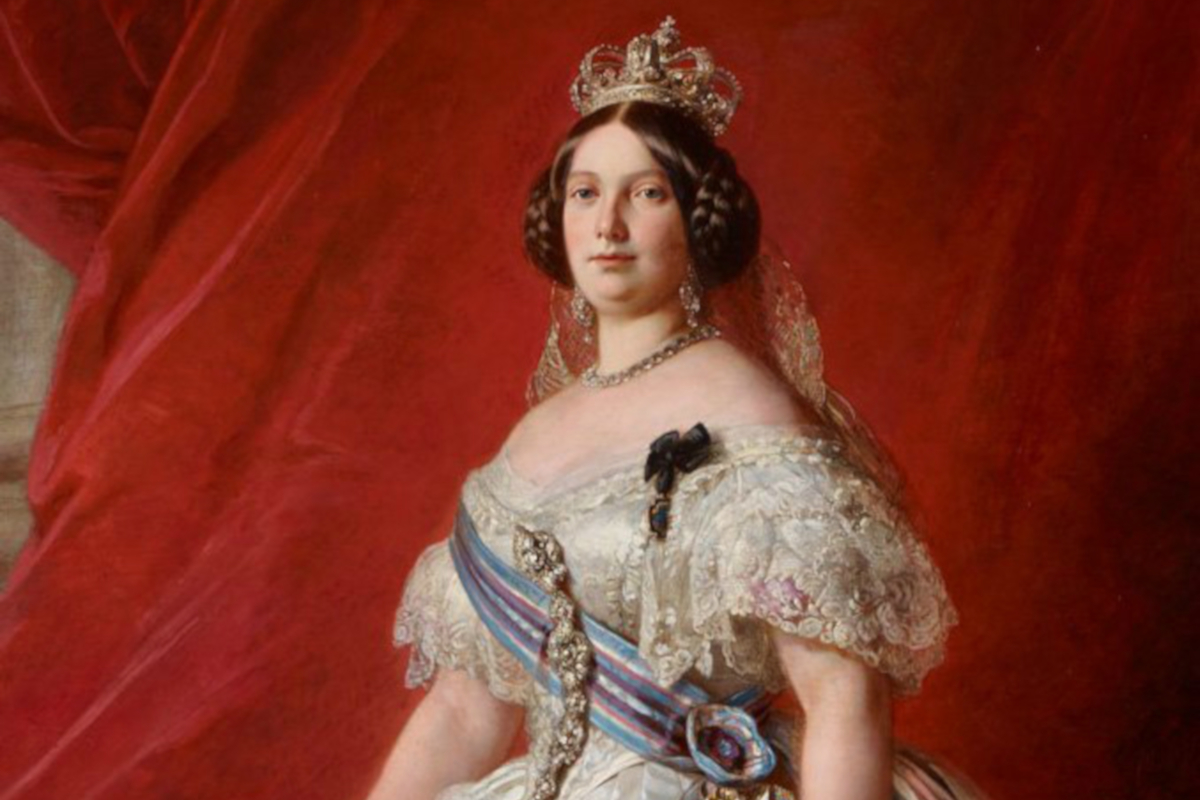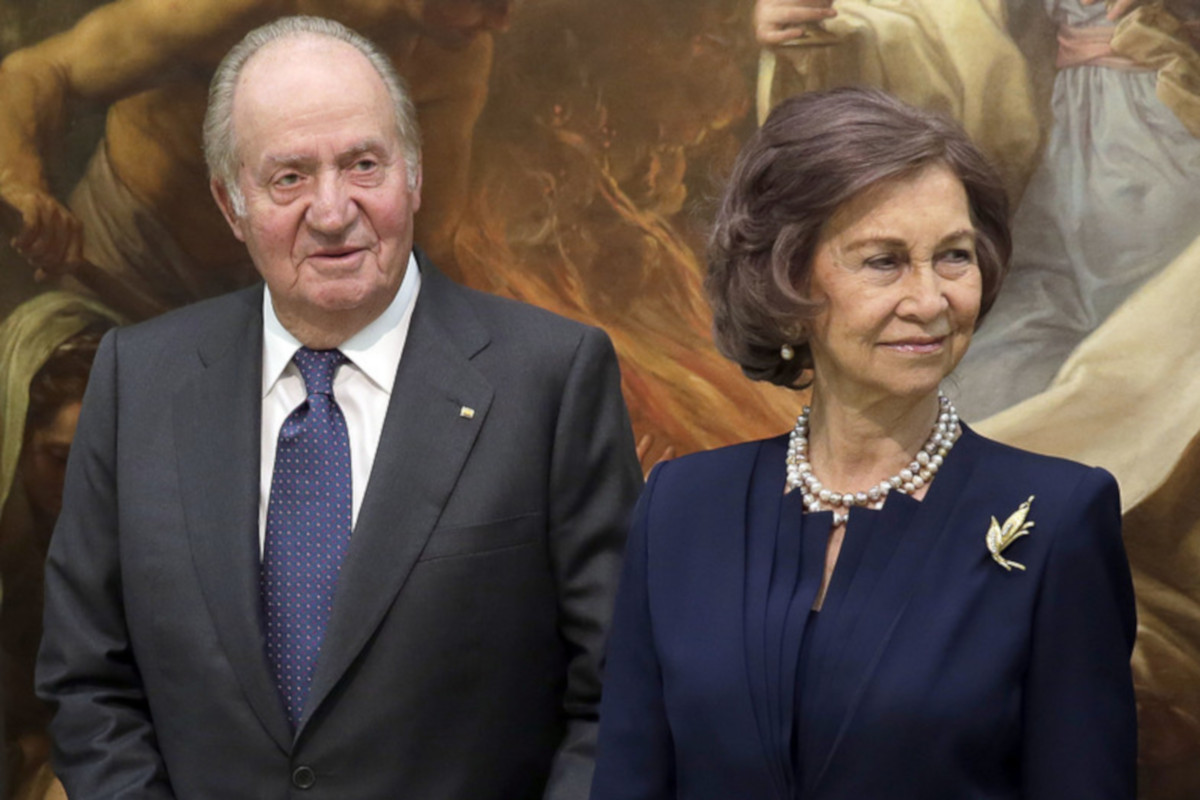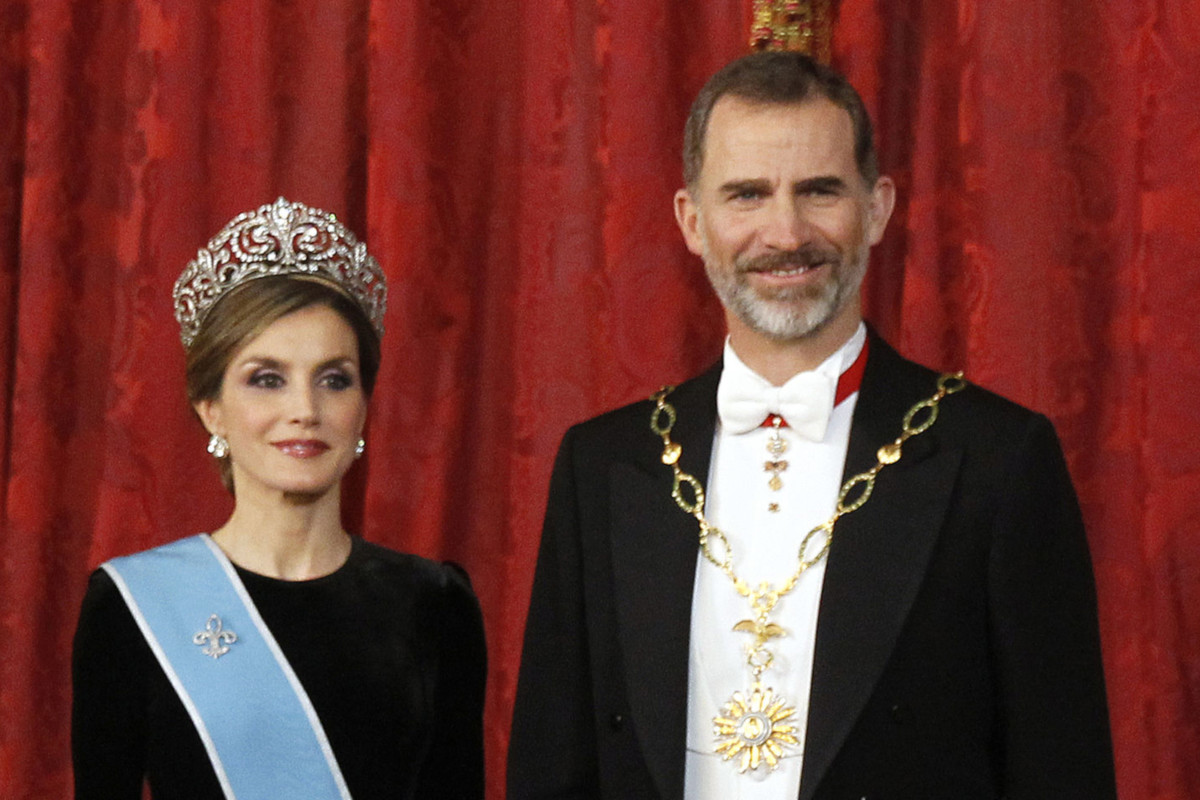The King of Spain is the head of state, a symbol of his unity and perseverance, who is responsible for deciding and moderating the proper functioning of the institutions and at the same time being the highest representative of the nation. In addition, he performs the functions expressly conferred upon him by the constitution and laws. He is the supreme commander of the armed forces and the holder of the highest patronage over the royal academies. The Constitution of 1978 deals with the institution of the crown, the person of the king and his functions in the II. Title, in Articles 56 to 65. The current King of Spain is Felipe de Borbón y Grecia as Felipe VI.

The King of Spain is the second sovereign master of the insignia of the Order of the Golden Fleece, the Royal Order of Charles III, the Royal Order of Elizabeth the Catholic, and the Order of the Noble Ladies of Queen Maria Luisa. He may also use the title of Catholic Majesty and, moreover, is an honorary and hereditary canonist of the Cathedral Church of Leon and the Basilica of Santa Maria Mayor in Rome.
The Constitution recognizes the King as absolutely inviolable and relieves him of all responsibility on his part, be it political or legal. At the same time, however, the Constitution provides for the nullity of all its acts which are not within its competence and are the responsibility of the Prime Minister, ministers, parliamentarian or parliamentarians.

Unification of Spain
When we speak of the King of Spain, we are talking about the period since the so-called reunification of Spain. Before the unification itself, there were several separate kingdoms and counties in what is now Spain. The unified Spanish state was established in 1469, when Ferdinand Aragon, heir to the throne of Aragon, planned to marry Isabel I of Castile, the heir to the Castilian throne. In 1474, Isabel of Castile became Queen of Castile and Ferdinand of Aragon (as Ferdinand V of Castile) her royal husband. In 1479 Ferdinand Aragon became King of Aragon, creating a personal union of Castile and Aragon.
In 1504 Izabela of Castile died and the throne in Castile was joined by her daughter Jane of Castile (Madia), which de de jure Castile and Aragon again separated. Ferdinand of Aragon was her regent, however, because after the death of her husband Philip of Habsburg in 1506 went crazy. Initially, Ferdinand of Aragon was temporarily expelled by nobles and replaced by Jane’s husband, Philip of Habsburg. However, he died in 1506. In 1512 Ferdinand of Aragon conquered the Kingdom of Navarre and annexed it to Aragon.

In 1516, the throne of Aragon was inherited by the grandson of Ferdinand of Aragon, Charles of Habsburg, who was also from 1519 the Emperor of the Holy Roman Empire of the German nation. He was the son of Jane of Castile, but at the same time for his mother’s madness „guardian and co-ruler“, but not the only ruler of Castile. In 1555, Jane of Castile died, making Charles of Habsburg the only ruler of Castile.
In 1580, a personal union was established between Portugal, Aragon and Castile, creating Spain in the sense of restoring the Roman “Hispania” covering the entire Iberian Peninsula. When Portugal separated in 1640, the name Spain for the rest of the peninsula remained unchanged. It was not until the Bourbon’s accession to the throne in 1700 that the centralized state of Spain was created. Until then, there had always been only several kingdoms with a common ruler. So until then, the Spanish kings had in their title – King of Aragon, Castile and Valencia, the Count of Barcelona. The Spaniards as a nation were even mentioned in the Constitution of 1812.
Thus, the first King of Spain is considered Charles I of Habsburg.
Overview of kings and queens.
Austrian dynasty

- 23.1.1516 – 16.1.1556 Carlos I. (24.2.1500 – 21.9.1589) King of Spain, Portuguese, Neapolitan, Sardinia and Sicily, Duke of Burgundy, sovereign ruler of the Netherlands, Archduke of Austria, Emperor of the Holy Roman Empire of the Roman German nation
- 11.3.1526 Isabela of Portugal
- Felipe (1527 – 1596), Maria (1528 – 1603), Fernando (1529 – 1530), Juana (1535 – 1573)
- 11.3.1526 Isabela of Portugal
- 16.1.1556 – 13.9.1598 Felipe II. (21.5.1527 – 13.9.1598) King of Spain, Portuguese, Neapolitan, Sardinia and Sicily, Duke of Milan and Burgundy, sovereign ruler of the Netherlands, titular king of English and Irish
- 15.11.1543 Maria Manuela of Portugal
- Carlos (1545 – 1568)
- 25.7.1554 Mary I of England
- 22.6.1559 Elisabeth of Valois
- Isabel Clara Eugenia (1566 – 1633), Catalina Micaela (1567 – 1597), Juana (1568 – 1568)
- 14.11.1570 Anna of Austria
- Fernando (1571 – 1578), Carlos Lorenzo (1573 – 1575), Diego Félix (1575 – 1582), Felipe (1578 – 1621), Maria (1580 – 1583)
- 15.11.1543 Maria Manuela of Portugal
- 13.9.1598 – 31.3.1621 Felipe III. (14.4.1578 – 31.3.1621) King of Spain, Portuguese, Neapolitan, Sardinia and Sicily, Duke of Milan and Burgundy, sovereign ruler of the Netherlands
- 18.4.1599 Margaret of Austria
- Ana Maria Mauricia (1601 – 1666), Maria (1603 – 1603), Felipe (1605 – 1665), Maria Anna (1605 – 1646), Carlos (1607 – 1632), Fernando (1609 – 1641), Margarita (1610 – 1617), Alonso (1611 – 1612)
- 18.4.1599 Margaret of Austria
- 31.3.1621 – 17.9.1665 Felipe IV. (8.4.1605 – 17.9.1665) King of Spain, Portuguese, Neapolitan, Sardinia and Sicily, Duke of Milan and Burgundy, sovereign ruler of the Netherlands, Count Flemish
- 25.11.1615 Elisabeth of France
- Margarita (1621 – 1621), Margarita Maria Catalina (1622 – 1623), Maria Eugenia (1625 – 1627), Isabel Maria Teresa (1627 – 1627), Baltasar Carlos (1629 – 1646), Francisco Fernando (1634 – 1634), Maria Ana Antonia (1636 – 1636), Maria Teresa (1638 – 1683)
- 8.11.1649 Mariana of Austria
- Margarita Teresa (1651 – 1673), Maria Ambrosia (1655 – 1655), Felipe Próspero (1657 – 1661), Fernando Tomás Carlos (1658 – 1659), Carlos (1661 – 1700)
- 25.11.1615 Elisabeth of France
- 17.9.1665 – 1.11.1700 Carlos II. (6.11.1661 – 1.11.1700) King of Spain, Neapolitan, Sardinia and Sicily, Duke of Milan and Burgundy, sovereign ruler of the Netherland
- 19.11.1679 Marie Louise d’Orléans
- 14.5.1690 Maria Anna of Neuburg
16 days after the death of Charles II. governed by the temporary „Junta de Gobierno“ (Government Council)
Bourbons

- 16.11.1700 – 15.1.1724 Felipe V. (16.12.1683 – 9.7.1746) King of Spain, Neapolitan, Sardinia and Sicily, Duke of Milan, sovereign ruler of the Netherland
- 2.11.1701 Maria Luisa of Savoy
- Luis Felipe (1707 – 1724), Felipe Luis (1709 – 1709), Felipe Pedro (1712 – 1719), Fernando (1713 – 1759)
- 24.12.1714 Elisabeth Farnese
- Carlos (1716 – 1788), Francesco (1717 – 1717), Maria Ana (1718 – 1781), Felipe (1720 – 1765), Maria Teresia (1726 – 1746), Luis Anton (1727 – 1785), Mara Antonia (1729 – 1785)
- 2.11.1701 Maria Luisa of Savoy
- 15.1.1724 – 31.8.1724 Luis I. (25.8.1707 – 31.8.1724) King of Spain
- 20.1.1722 Louise Élisabeth d’Orléans
After the death of Louis, the throne was empty for 6 days.
- 6.9.1724 – 9.7.1746 Felipe V. (reigned again)
- 9.7.1746 – 10.8.1759 Fernando VI. (23.9.1713 – 10.8.1759) King of Spain
- 20.1.1729 Barbara of Portugal
- 10.8.1759 – 14.12.1788 Carlos III. (20.1.1716 – 14.12.1788) King of Spain, Neapolitan and Sicilian, Duke of Parma
- 9.5.1738 Maria Amalia of Saxony
- María Isabel Antonia (1740 – 1742), María Josefa Antonia (1742 – 1742), María Isabel Ana (1743 – 1749), María Josefa Carmela (1744 – 1801), María Luisa (1745-1792), Felipe Antonio (1747 – 1777), Carlos (1748 – 1819), María Teresa Antonia (1749 – 1750), Fernando 1751 – 1825), Gabriel (1752 – 1788), María Ana (1754 – 1755), Antonio Pascual (1755 – 1817), Francisco Javier (1757 – 1771)
- 9.5.1738 Maria Amalia of Saxony
- 14.12.1788 – 19.3.1808 Carlos IV. (11.11.1748 – 19.1.1819) King of Spain
- 4.9.1765 Maria Luisa of Parma
- Carlos Clemente (1771 – 1774), Carlota Joaquina (1775 – 1830), María Luisa (1777 – 1782), María Amalia (1779 – 1798). Carlos Domingo (1780 – 1783), María Luisa (1782 – 1824), Carlos Francisco (1783 – 1784),
Felipe Francisco (1783 – 1784), Fernando (1784 – 1833), Carlos María (1788 – 1855), María Isabel (1789 – 1848), María Teresa (1791 – 1794), Felipe María (1792 – 1794), Francisco de Paula (1794 – 1865)
- Carlos Clemente (1771 – 1774), Carlota Joaquina (1775 – 1830), María Luisa (1777 – 1782), María Amalia (1779 – 1798). Carlos Domingo (1780 – 1783), María Luisa (1782 – 1824), Carlos Francisco (1783 – 1784),
- 4.9.1765 Maria Luisa of Parma
- 19.3.1808 – 6.5.1808 Fernando VII. (4.10.1784 – 29.9.1833) King of Spain
- 4.10.1802 Maria Antonia of Naples and Sicily
- 29.9.1816 Maria Isabel of Portugal
- María Luisa Isabel Fernanda (1817 – 1818)
- 20.10.1819 Maria Josepha of Saxony
- 11.12.1829 Maria Christina of the Two Sicilies
- Isabel (1830 – 1904), Luisa Fernanda (1832 – 1897)
- 6.5.1808 Carlos IV. (He only ruled for one day. In most of Spain, Ferdinand’s abdication was not recognized because it was made under pressure.)
Intergovernmental period
- 6.5.1808 – 6.6.1808 the country was led by Joaquin Murat, Grand Duke of Berg and Cleves
Bonaparte dynasty
- 6.6.1808 – 11.12.1813 José I. Napoleón (7.1.1768 – 28.7.1844) King of Spain, brother of Napoleon Bonaparte. He was not generally recognized as a king, and his laws were generally considered invalid after the Bourbon’s return to the throne.
- 1.8.1794 Julia Clary
- Julia Josefina (1796 – 1796), Zenaïde Charlotte Julie (1801–1854), Charlotte Napoléone (1802–1839)
- 1.8.1794 Julia Clary
Bourbons

- 11.12.1813 – 29.9.1833 Fernando VII. (reigned again)
- 29.9.1833 – 30.9.1868 Isabel II. (10.10.1830 – 9.4.1904) Queen of Spain, Regents María Cristina de Borbón (1833-1840) and Baldomero Espartero (1840-1843)
- 10.10.1846 Francis, Duke of Cádiz
- Luis (1849 – 1849), Fernando (1850 – 1850), María Isabel Francisca (1851-1931), María Cristina (1854 – 1854), Francisco (1856 – 1856), Alfonso (1857-1885) María de la Concepción (1859-1861), María del Pilar de Borbón (1861-1879), María de la Paz (1862-1946), María Eulalia (1864-1958), Francisco (1866 – 1866).
- 10.10.1846 Francis, Duke of Cádiz
Intergovernmental period
- 30.9.1868 – 18.6.1869 ruled by the president of the temporary revolutionary junta
Restoration of the Kingdom
- 18.6.1869 – 2.1.1871 Francisco Serrano y Domínguez (regent)
Savoy Dynasty
- 2.1.1871 – 11.2.1873 Amadeo I. (30.5.1845 – 18.1.1890) King of Spain
- 30.5.1867 María Victoria dal Pozzo
- Manuel Filiberto (1869-1913), Víctor Manuel (1870-1946), Luis Amadeo (1873-1933)
- 11.9.1888 María Leticia Bonaparte
- Humberto (1889 – 1918)
- 30.5.1867 María Victoria dal Pozzo
1st Republic
- 12.2.1873 – 29.12.1874 presidents ruled as chairmen of executive power
Restoration of the Kingdom – Bourbons

- 29.12.1874 – 25.11.1885 Alfonso XII. (28.11.1857 – 25.11.1885) King of Spain
- 23.1.1878 María de las Mercedes de Orleans
- 29.11.1879 María Cristina of Austria
- María de las Mercedes (1880-1904), María Teresa (1882-1912), Alfonso (1886-1941)
- 25.11.1885 – 17.5.1886 Maria Cristina, regent
- 17.5.1886 – 14.4.1931 Alfonso XIII. (17.5.1886 – 28.2.1941) King of Spain, until 1902 his mother Maria Cristina ruled as regent
- 31.5.1906 Victoria Eugenie of Battenberg
- Alfonso (1907 – 1938), Jaime (1908 – 1975), Beatriz (1909 – 2002), Fernando (1910 – 1910), Maria Cristina (1911 – 1996), Juan (1913 – 1993), Gonzalo (1914 – 1934)
- 31.5.1906 Victoria Eugenie of Battenberg
2nd Republic
- 14.4.1931 – 28.7.1947 presidents and prime ministers. The longest ruled was Francisco Franco..
Restoration of the Kingdom
- 28.7.1947 – 20.11.1975 In 1947 the monarchy was formally restored, but its rightful representative Juan Carlos was not allowed to join the throne. In the period from July 28, 1947 to November 20, 1975 Francisco Franco ruled as a life regent. In 1969, Juan Carlos was designated as Franco’s posthumous successor.
- 20.11.1975 – 22. 11.1975 Alejandro Rodríguez de Valcárcel y Nebreda (President of the Regent Council)
Bourbons

- 22.11.1975 – 18.6.2014 Juan Carlos I. (5.1.1938 – ) King of Spain, grandson of Alfonso XIII.
- 14.5.1962 Sophia of Greece
- Elena (1963 – ), Cristina (1965 – ), Felipe (1968 – )
- 14.5.1962 Sophia of Greece

- 19.6.2014 – (deň publikácie článku) Felipe VI. (30.1.1968 – )kráľ španielsky
- 22.5.2004 Letizia Ortiz Rocasolano
- Leonor (2005 – ), Sofia (2007 – )
- 22.5.2004 Letizia Ortiz Rocasolano

(Illustrative photos – internet source)
Did you like this article, was it useful to you? You can also support the creation of this website by sending any amount to ES08 0049 5735 1122 1616 5370, swift BSCHESMM. Include „Canaria Guide Support“ in the note. Thank you for supporting.



